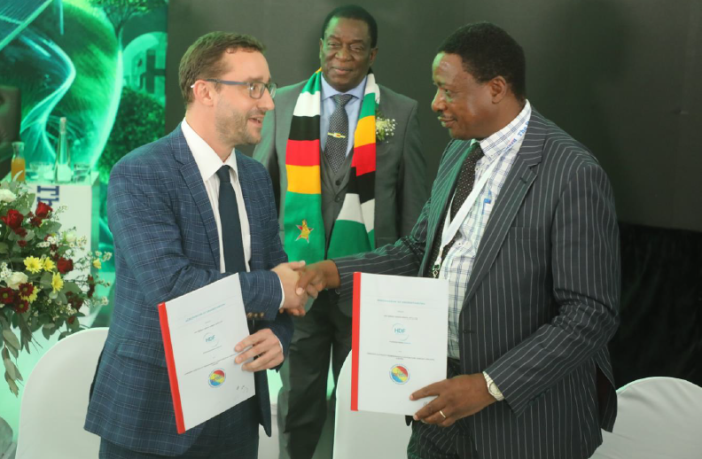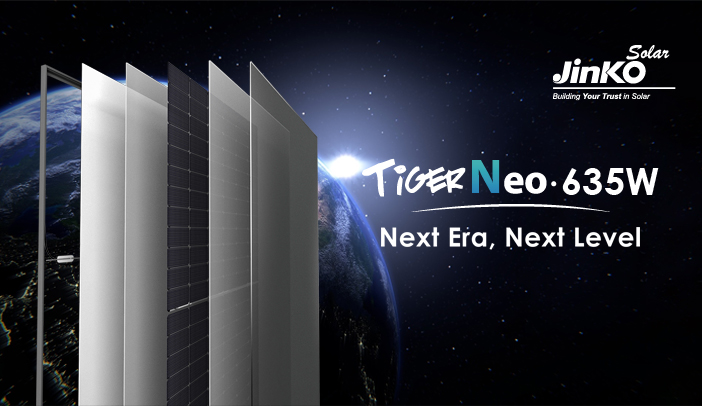- Hydrogène de France (“HDF Energy”) has reached a further step in the development of Zimbabwe’s first high-powered green hydrogen power plant, the Middle Sabi Renewstable®, by formalizing the shared goal to supply the Zimbabwe Electricity Transmission and Distribution Company (ZETDC) in a Memorandum of Understanding.
The signing ceremony of the MoU for new green hydrogen cooperation was presided over by His Excellency E. D. Mnangagwa, President of the Republic of Zimbabwe, during the International Renewable Energy Conference, in Victoria Falls.
This Memorandum of Understanding was signed by Engineer John Diya, representing the Acting Managing Director of ZETDC, and Nicolas Lecomte, Director of HDF Energy for Southern and East Africa. It creates a framework for the joint technical and administrative work to complete the development of this first green hydrogen power plant investment in Zimbabwe, as well as the commercialization of its electricity and grid services, through a dedicated Power Purchase Agreement.
HDF Energy is developing the Middle Sabi Renewstable® in the Chipinge District, Manicaland Province in Zimbabwe. The project is located in the southeast part of Zimbabwe, very far from the country’s largest generation assets in the northwest. Benefits are thus created by locating generation of stable and dispatchable renewable energy closer to the demand load centers thus reducing transmission losses and increasing access to electricity for the local population. The plant will produce green power 24/7 feeding into the grid through the Middle Sabi Substation located 4 km from the project site. The annual electric production will be 178 GWh, providing electricity to more than 220,000 inhabitants.
Middle Sabi Renewstable® is being developed within the multi-project, multi-technology, multi-investor Chipangayi Renewable Energy Technology Park (RETPark). RETPark has been under development since 2016, and has obtained all the initial permitting and studies to allow fast development of tenant investments.
In line with the goals and key aspirations of the Government’s National Development Strategy 1 (NDS1) and Vision 2030, this MoU supports the ambitious plan of the Government of Zimbabwe to support the development of over 1000 MW of solar projects by Independent Power Producers to help narrow the severe energy deficit currently being experienced in the country. This substantial roll out will require additional renewable baseload capacity to prevent challenges introduced to the grid by intermittent sources of power generation such as wind and solar: the firm, dispatchable, on-demand characteristics of the Middle Sabi Renewstable® will enhance the country’s ability to expand this solar rollout program without the risk of causing instability to the grid, while still achieving its energy decarbonization targets. The Renewstable® power plant reduces exposure to imported fuels, price volatility and associated supply risks by using local sources of energy and thus helping to sustain domestic power generation.
Furthermore, the cooperation between HDF Energy and ZETDC will kick-start implementation of green hydrogen investment and development of technical green hydrogen skills in Zimbabwe. This investment will meaningfully contribute to the GDP growth of Manicaland which has one of the lowest provincial GDP’s per capita in Zimbabwe. There will be a positive impact on the livelihoods of the local community through the local jobs that will be created directly and indirectly, as well as HDF’s corporate and social responsibility initiatives.
Author: Bryan Groenendaal

















1 Comment
Pingback: HDF Energy to Develop 178 GWh Green Hydrogen Project in Zimbabwe